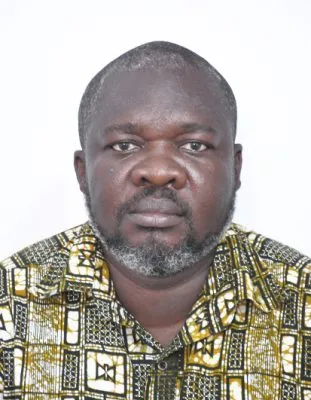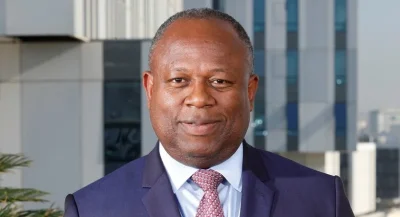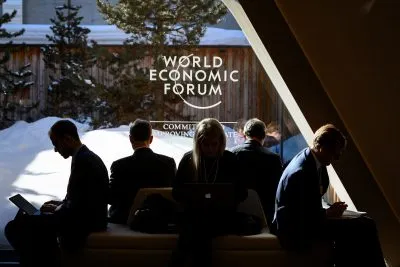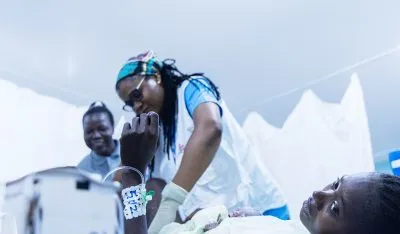This article is part of a series produced in collaboration with the African Development Bank in light of its sixtieth anniversary. Please visit our dedicated portal to read about the Bank's history and its activities on the continent.
The resulting institution, the African Development Bank, began life in 1965, first operating from the Addis Ababa offices of the Economic Commission for Africa before relocating to its current berth in Abidjan, Côte d’Ivoire and inking its first transactions – a loan to fund road construction in Kenya and an equity stake in the National Development Bank of Sierra Leone.
The first decade laid the foundation for growth, with the creation of key funding mechanisms like the African Development Fund (ADF) in 1972, backed by non-African nations, and the Nigerian Special Fund, established in 1976. In the second decade of its life, the bank had to navigate the global oil crises of the 1970s, while opening its arms to non-African countries as members, a move that enhanced the institution’s global standing and credit rating. By the early 1980s, the AfDB was firmly positioned as a leading development finance institution, continuing its mission to support African nations in achieving sustainable economic growth.
In the wake of the 2008 global financial crisis, the AfDB rose to meet the moment, with an accelerated programme of lending and investment to support member states through that crucial period, following a successful 6th global capital raise that brought in $64bn. The bank also worked on developing a coordinated strategy to address the severe challenges to credit, investment, and economic development caused by the global financial crisis. The Arab Spring of the early 2010s drew a similar response with the bank initiating several interventions to support affected members and spur development in order to address the root causes of the unrest.
Over the six decades since its establishment, the bank has grown to become an indispensable partner to Africa and African countries, providing critical investments to support infrastructure development, expansion of social services and the facilitation of ever increasing investments into productive sectors of the African economy. The bank has steadily built up its teams and its balance sheet, culminating in its current status as a triple A rated institution with an asset base north of $43bn.
More recently, the AfDB has turned its attention to the climate emergency, with a drive for sustainable economic transformation across the continent through innovation, partnerships, and major investments. Under the leadership of Dr. Akinwumi Adesina, first elected president in 2015, the bank introduced the “High-5” agenda, targeting five key development areas: Powering, Feeding, Industrialising, and Integrating Africa, while improving the quality of life for its people. These priorities align closely with global goals, with a report from the United Nations Development Programme suggesting that achieving the High-5s would fulfil nearly 90% of Africa’s Sustainable Development Goals.
The Bank has also launched impactful initiatives like the Africa Investment Forum, which has attracted over $180bn in investment interest, and the Desert to Power initiative, a $20bn renewable energy project aiming to provide solar power to 250 million people across the Sahel. A historic capital increase in 2019 boosted the Bank’s lending capacity, allowing it to finance large-scale projects that have reshaped infrastructure, energy, and economic development across Africa.This year, the Bank has further expanded its financing capabilities, issuing $750m in sustainable hybrid capital notes. This groundbreaking fundraising effort is motivated by the Bank’s goal to significantly expand its investments and impact across the continent. The Bank’s leveraging capacity could increase four-fold, if efforts to make the Special Drawing Rights from the International Monetary Fund available for it to utilise as hybrid capital prove successful.
Speaking to staff at the Hotel Ivoire in Abidjan ahead of the launch of the 60th anniversary celebrations on 9th September, 2024,, Adesina celebrated the vital contributions of the Bank’s staff, emphasising their role in Africa’s transformation over the past six decades. Adesina highlighted the Bank’s impact, including the transformation of 400 million lives and the growth of its capital from $250m to $318b. ““Today, as in the past, you are part of Africa’s transformation. The Bank’s entire ecosystem plays a part in each project. Over the last 60 years, different types of staff have brought genuine change to the continent. Our work over the last eight years has transformed the lives of 400 million people. I would like to thank you for your extraordinary efforts,” Adesina stressed. He commended the courage of staff working in challenging environments like Somalia and Sudan and reaffirmed his dedication to attracting top talent to address Africa’s future challenges.
Adama Coulibaly, Côte d’Ivoire’s Minister of Finance and the Budget, speaking on behalf of Nialé Kaba, Minister of Planning, the Economy and Development and the Bank’s Governor for Côte d’Ivoire, expressed deep gratitude to Dr. Adesina for his leadership and accomplishments. He praised Adesina as the “heart and soul” of the African Development Bank, acknowledging its remarkable progress over the past six decades and its role in lifting millions of Africans out of poverty. Coulibaly also reaffirmed Côte d’Ivoire’s commitment to supporting the Bank’s five operational priorities, highlighting the unique partnership between the country and the institution. “Our partnership with the bank group is special. May the coming decades be full of new achievements and progress for staff, for the bank and for the whole of our continent,” Coulibaly said.
Launching the celebrations on 10th September, President Alassane Ouattara of Cote d’Ivoire lauded the bank, which he said “has financed some pivotal infrastructure and helped improve the living conditions of millions of Africans,” adding “the bank is a source of pride and hope for Africa.” Noting the challenges that Africa continues to face, the president implored the bank to maintain its focus. “Africa still has floods and wars and hunger is rife. Therefore the Bank must do even more and encourage states to invest more across climate, agriculture, wars and endeavour to pursue peace and democracy to bring these wars to an end,” he stressed.
In a keynote address, Adesina celebrated the bank’s achievements since its founding, highlighting its support for over 6,575 projects across Africa, including $77bn across 3,000 projects in the last decade, solidifying its role as the continent’s most trusted development partner. He thanked President Ouattara for his support, particularly in securing a record $115bn capital increase in 2019, which helped grow the bank’s total capital to $318bn by May 2024, providing crucial “firepower” for addressing Africa’s challenges and advancing the Bank’s High 5s strategy.
Under Adesina’s leadership, the Bank has provided over $55bn in infrastructure development, making it Africa’s largest multilateral financier. It also successfully mobilised $72bn to unlock Africa’s agricultural potential at the Feed Africa Summit in Dakar, Senegal and supported Africa’s climate resilience efforts, securing $25bn through the Africa Adaptation Acceleration Programme and $14bn via its Climate Action window. Adesina said the “celebration is a call to action to build the Africa we want to see,” concluding by expressing the hope that “the African Development Bank keeps scoring development goals for Africa”.
During a panel discussion following the launch of the celebrations, Georges Rigobert Aithnard, the bank’s oldest retiree recalled the challenges the bank faced in its infancy, including when it struggled to secure a meeting with the vice president of another DFI. Aithnard, who joined in 1965 as personal assistant to the first president and rose to become the director of the African Development Institute of the bank, highlighted its remarkable progress in overcoming initial fears to become a global credible institution. Nnenna Nwabufo, director general of the bank’s East Africa Regional Development Office, described AfDB as Africa’s “partner of choice” in development discussions, particularly in fragile states. Jerome Berndt, a principal fragility and resilience officer in the transition states coordination office, praised the inspiration and contributions of staff, especially young professionals, to the Bank’s success.

 Sign in with Google
Sign in with Google 



